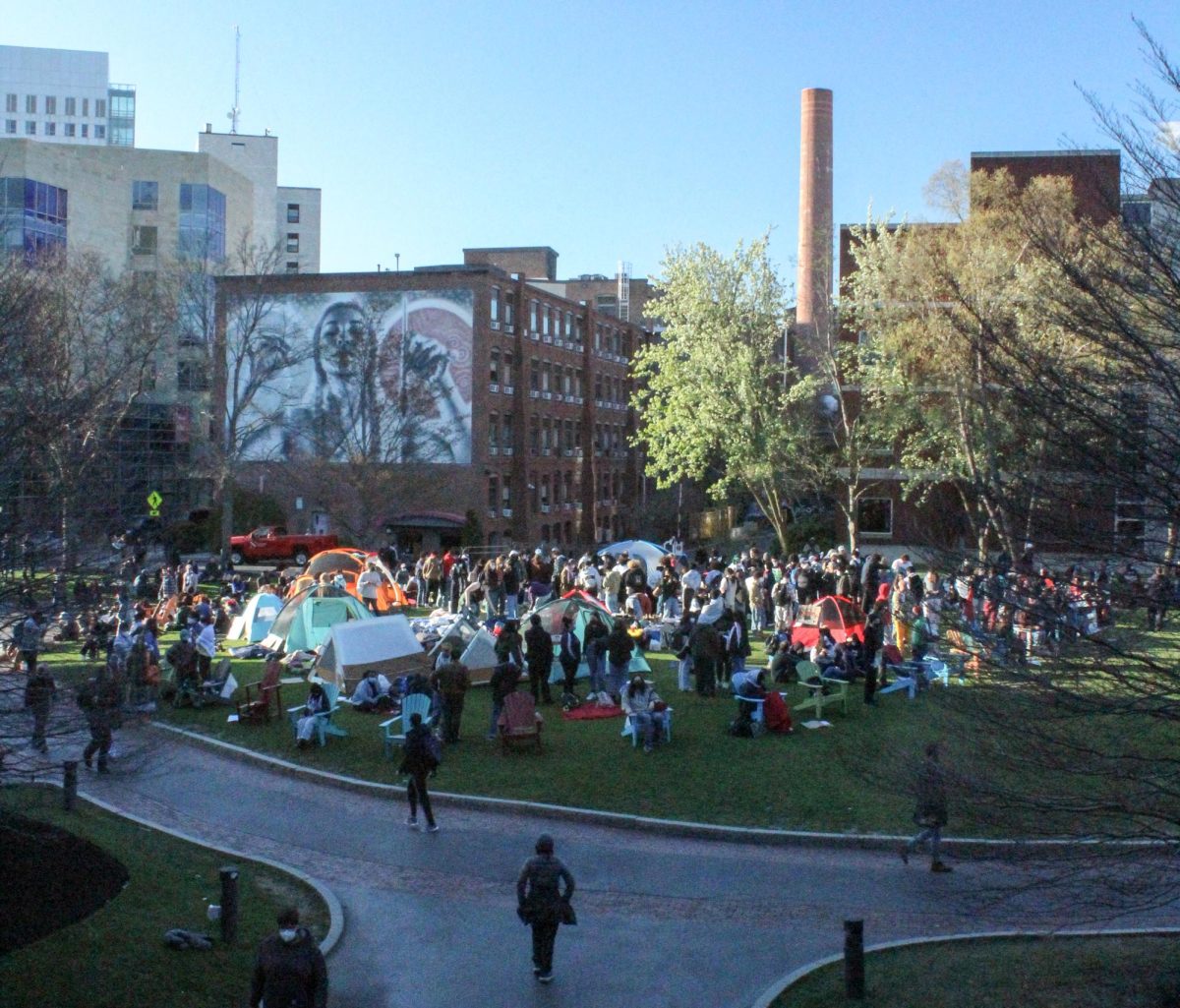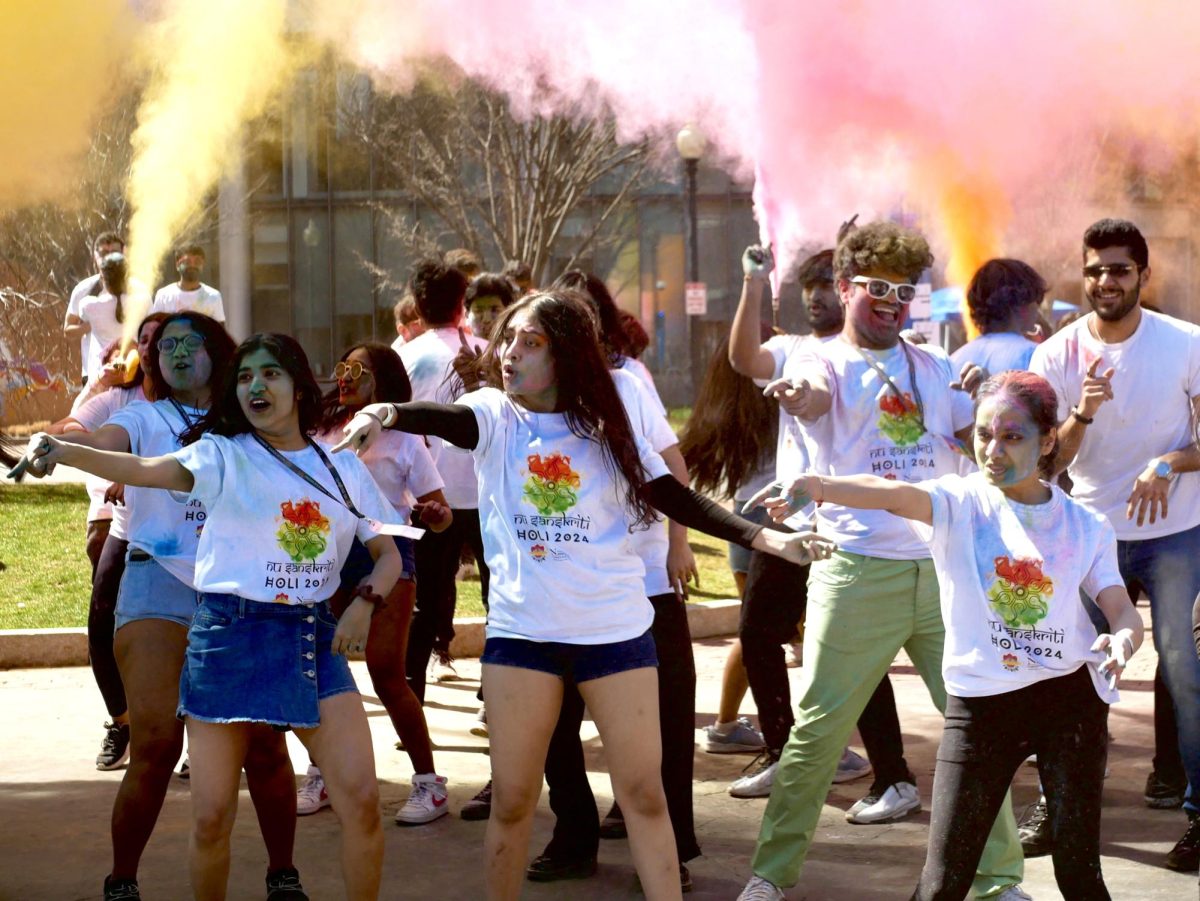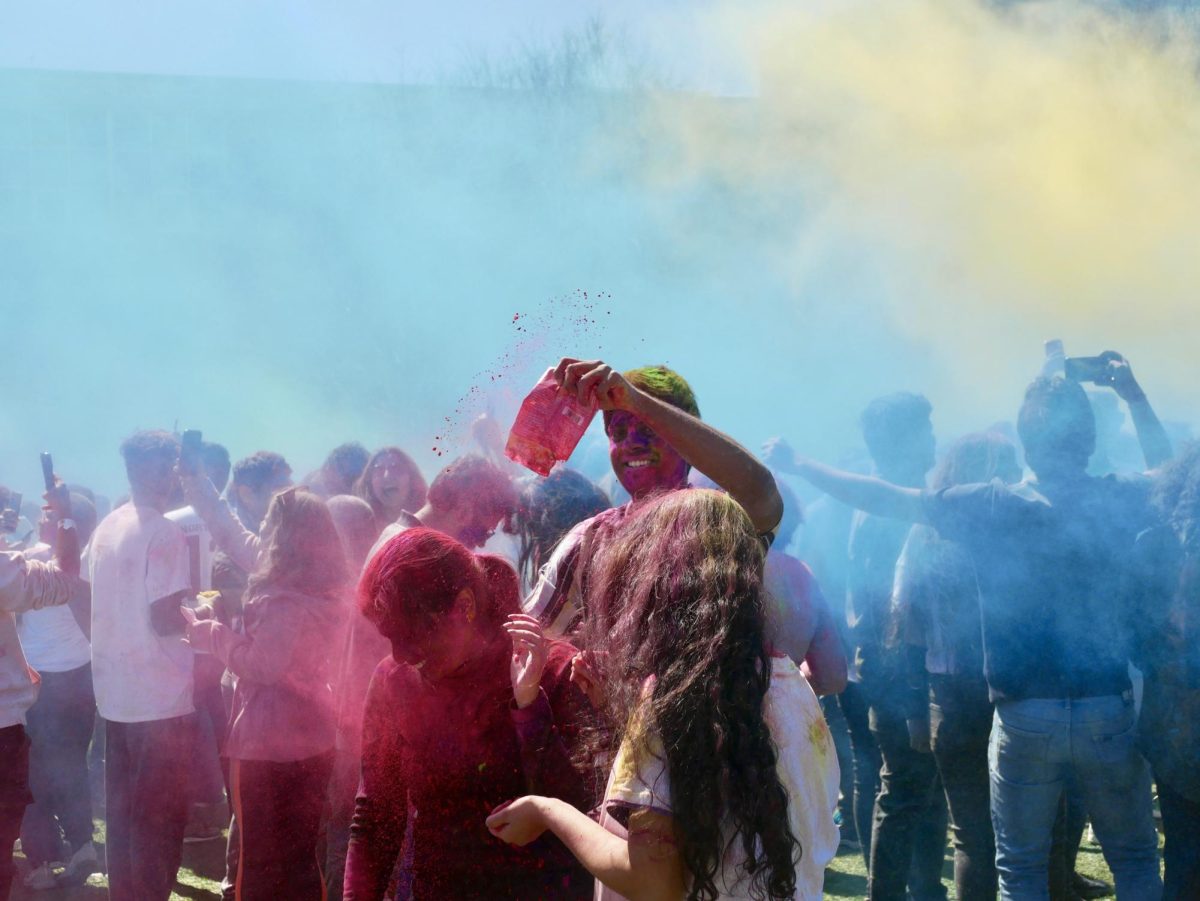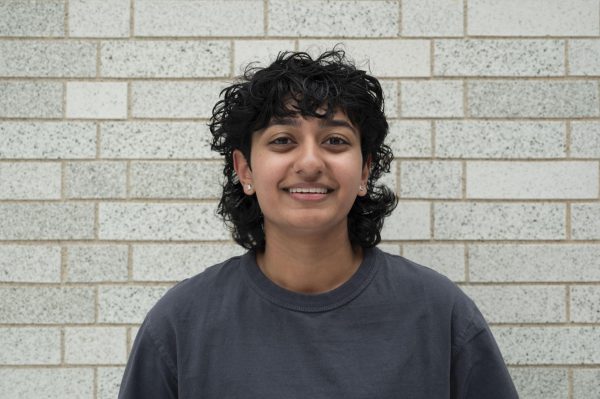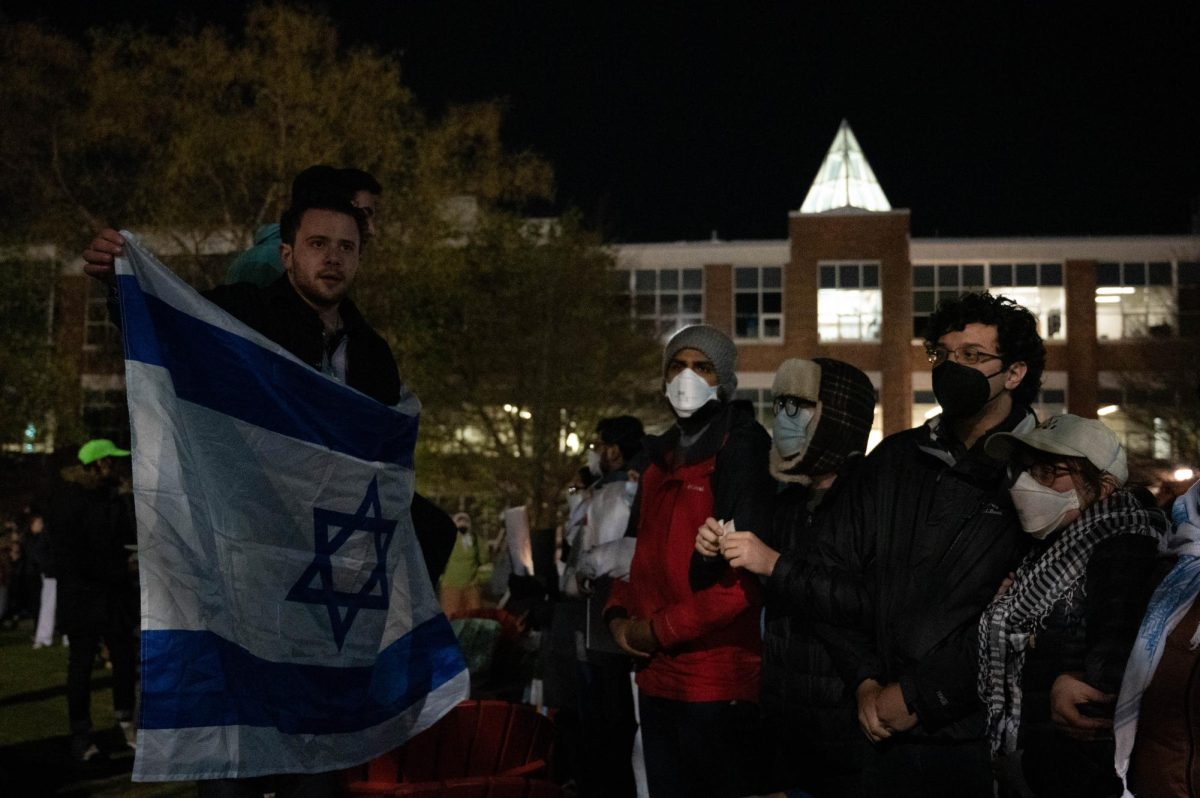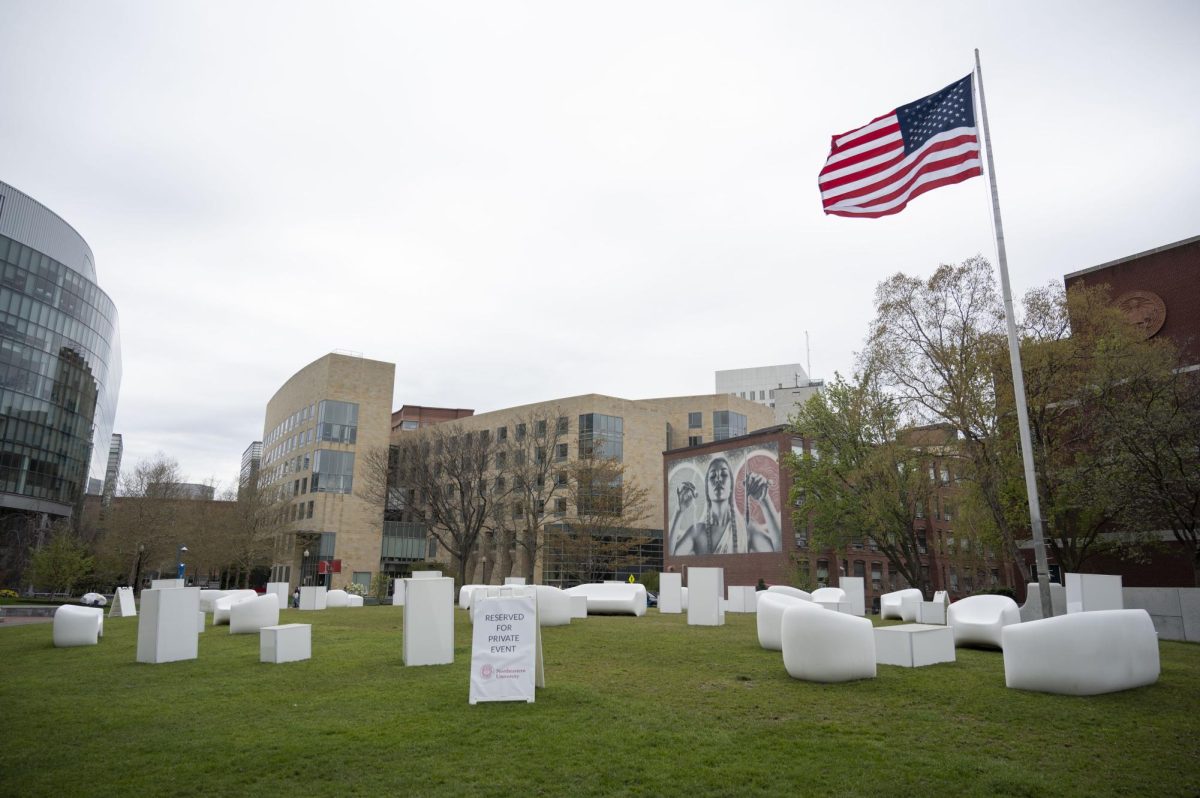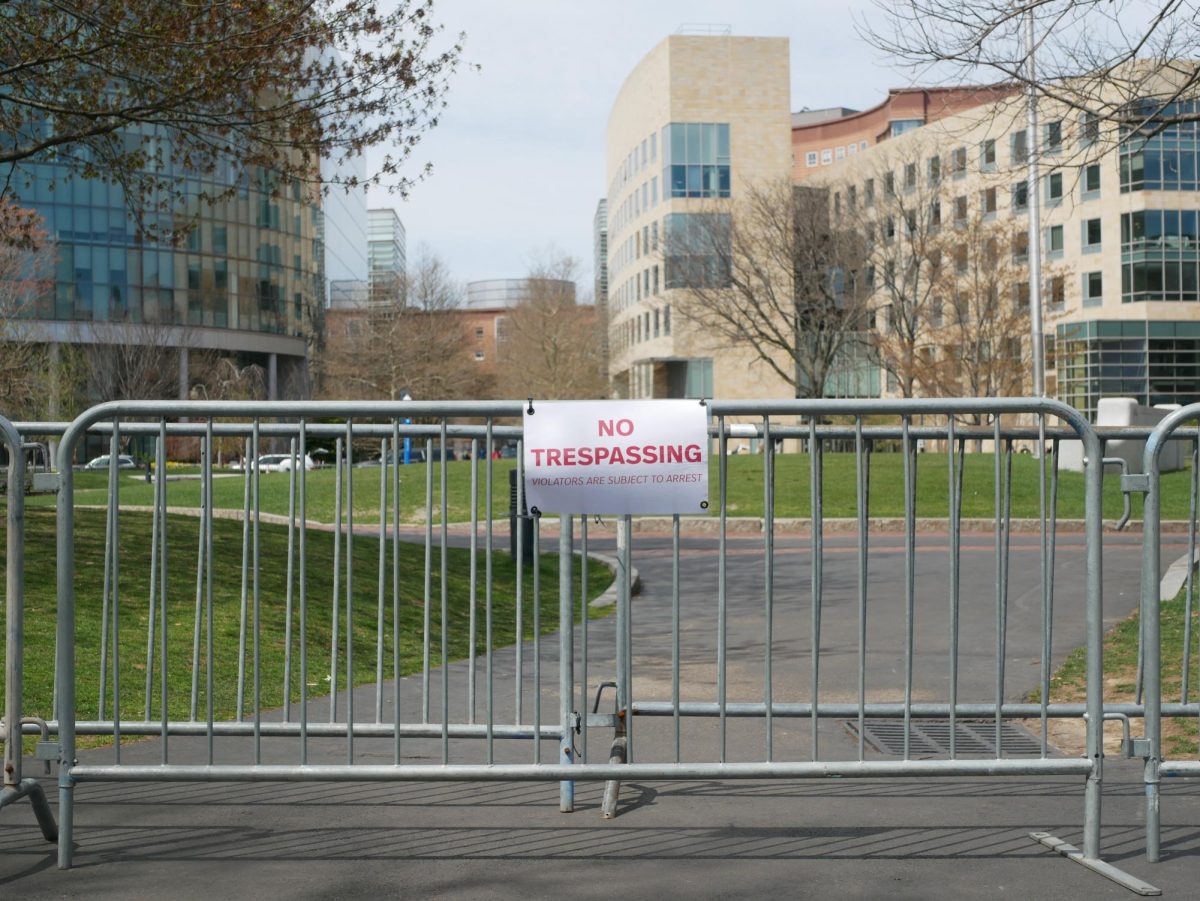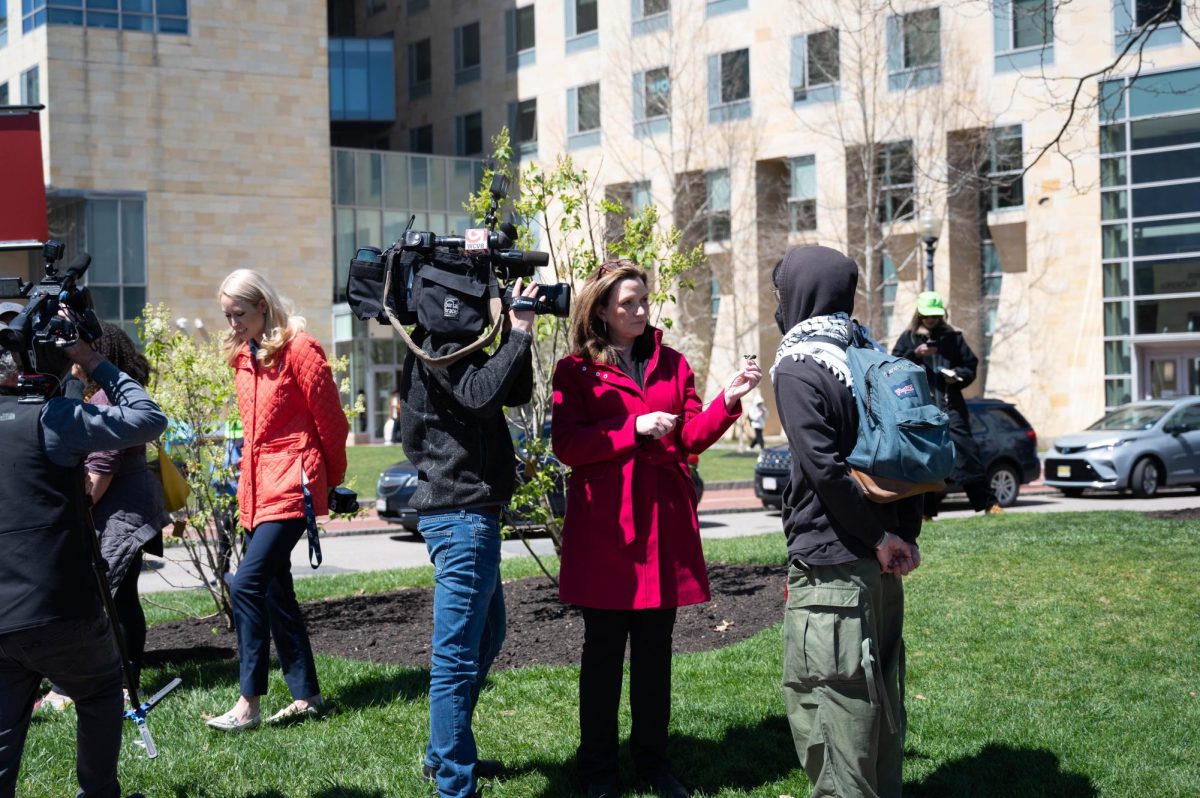Thousands of students adorned Centennial Common with color Saturday in celebration of Holi, a Hindu holiday meant to bid winter farewell and welcome spring.
NU Sanskriti, Northeastern’s Indian student association, hosted the annual event alongside the Center for Spirituality, Dialogue, and Service and the Office of Global Services, or OGS. With song, dance and no shortage of color, organizers said this year’s celebration attracted more attendees than ever before.
Students, many wearing white shirts in accordance with tradition, threw colored powder at each other and into the air, filling Centennial with clouds of every hue of the rainbow. Friends and strangers alike affectionately smeared each other’s foreheads and cheeks and yelled, “Holi hai,” or “It’s Holi!”
Dubbed “the festival of colors,” Holi honors the triumph of good and love over evil. The tradition of throwing colored powder comes from a story in Hindu mythology, in which a blue-skinned god smeared color on a goddess’ face to make her fall in love with and marry him.
Beyond its religious roots, in the United States, Holi is an opportunity for Hindus and South Asians to unite in celebration of their ethnicity, heritage and culture. When asked what their favorite part about the celebration was, many participants named the feeling of a sense of community.
“I think just seeing so many people from India together in this one space [is my favorite part],” said Deeksha Hardasani, a graduate student studying business analytics. “I feel like if I go out there I’ll probably make 20 more friends.”
Some students celebrate Holi purely recreationally. Several non-Indian students were welcomed onto Centennial to join the festivities, and parents and prospective students on campus tours paused to take pictures and observe.
To gain access to colors and NU Sanskriti T-shirts, students needed to reserve free tickets via an online portal. The event was originally scheduled for Saturday, March 23 but was postponed due to inclement weather. Despite some confusion over the date and the event’s occurrence further from the observed date of Holi, which fell on March 25 this year, the excitement culminated Saturday morning. At 11:30 a.m., NU Sanskriti executive board members began admitting people onto Centennial from a long line, which stretched from the Centennial Common sign past Shillman Hall and into the Ruggles Station cul-de-sac.
Once the majority of ticketholders gained entry to the event, the color throw paused for performances by NU Sanskriti club members, who presented coordinated Indian songs and dances. A tent decorated with traditional garlands, candles and framed pictures of Hindu gods stood at the center of Centennial for a puja — a ritual offering to gods conducted on days of worship or celebration.
This was NU Sanskriti’s third annual hosting of Holi on Centennial, and the event drew record attendance, indicated by the line to enter remaining two hours after the celebration’s start. Demand for tickets was so high that organizers said the club had to release a second round, which also sold out.
Nithin Paramashivam, a graduate student studying business analytics, emphasized how quickly tickets sold out.
“The tickets were getting sold like two, three minutes [after they became available],” he said. “It’s just crazy.”
Devansh Mehta, NU Sanskriti’s head of finance and a graduate student studying advanced and intelligent manufacturing, tracked approximately 25,000 page views on the ticketing portal and 18,000 clicks on its trackable links, he said. Two thousand tickets sold between the two rounds of sales. Mehta described the demand for tickets as “bittersweet.”
“It’s a matter of pride that a lot of people are interested in attending our events, but it’s also a shame that we cannot cater to the entire Indian student population on this campus,” he said.
Harshal Randad, NU Sanskriti’s head of events and a graduate student studying project management, attributed high attendance to the club’s branding and promotion of the event on its Instagram. Further bolstering awareness was the most coveted form of recognition a Northeastern club can receive: a collaborative reel with President Joseph E. Aoun, posted to both NU Sanskriti and the university’s official accounts. Randad said Aoun told them that Holi is “his favorite festival.”
Mehta and Randad thanked OGS for funding the celebration, allowing all tickets to be free. Holi is part of OGS’ “Carnevale,” a series of events highlighting diversity on campus hosted in partnership with various cultural student organizations.
NU Sanskriti prides itself on creating space for Indian students to unite under shared backgrounds and experiences, especially given their representation in the student body.
The club caters to more than 7,900 active Indian students at Northeastern. The university has a high population of Indian international students, including many graduate students attending the university on student visas. For those who go months, or even years, without returning to India, celebrating Holi at Northeastern is a one-day trip back home.
“I mean, it’s a different country. We have literally crossed seven [seas] to be here,” said Himavarni Singh, a graduate student studying information systems. “But it still feels like home, so that’s a great feeling.”
Mehta called his shared experience with students like Singh “the driving force” behind hosting events like Holi.
“It’s really important for us to create an atmosphere that will be the same as being in India, with being thousands of miles away from home,” Mehta said.





